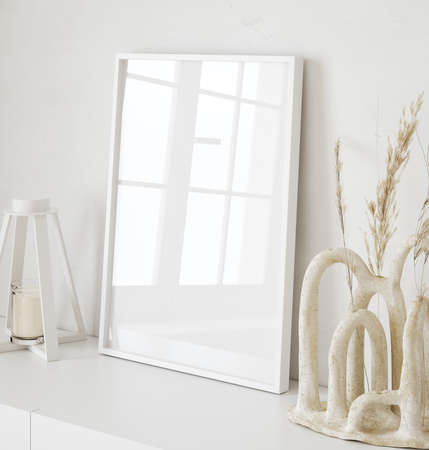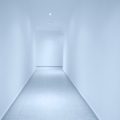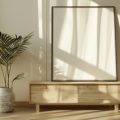Understanding Natural Light in British Flats
Maximising natural light is a common challenge for those living in small British flats, especially when considering the nation’s distinctive weather and architectural heritage. The UK is well known for its overcast skies and frequent rainy spells, resulting in limited direct sunlight throughout much of the year. These persistent grey days can make even the most inviting spaces feel dim and enclosed, particularly in urban settings where neighbouring buildings often block available light.
Traditional British flat architecture further complicates matters. Many older buildings were designed with smaller windows to retain heat during colder months, which unfortunately means less natural illumination indoors. Additionally, thick walls and compartmentalised layouts—features prized for their insulation and privacy—can restrict the flow of daylight from one room to another. High ceilings and deep window recesses, while charming, can also create shadows that reduce the effectiveness of any incoming sunlight.
These factors combine to present a unique set of challenges for residents hoping to brighten up their living environments without resorting exclusively to artificial lighting. Understanding these constraints is an essential first step before exploring creative solutions such as strategic mirror placement, which can help make the most out of every beam of natural light available.
2. The Science Behind Mirror Placements
Understanding how mirrors interact with natural light is fundamental when aiming to brighten up small British flats. Mirrors work by reflecting light rays, which can be harnessed to make compact spaces feel more open and airy. The core principles involve angles of incidence and reflection, as well as the overall flat layout.
The Role of Angles in Light Reflection
When sunlight or daylight enters a room, its path can be redirected using strategically positioned mirrors. According to the law of reflection, light bounces off a mirror at the same angle it arrives. This means that careful placement is key—placing a mirror directly opposite or adjacent to a window can redirect sunlight deeper into the flat. In long or narrow layouts typical in many British conversions, angling mirrors towards darker corners can help distribute available light more evenly.
Mirror Placement Strategies for Common Flat Layouts
| Flat Layout Type | Optimal Mirror Position | Light Amplification Effect |
|---|---|---|
| Studio/Single Room | Large mirror opposite window; smaller mirrors near dark corners | Maximises incoming light and minimises shadowy zones |
| Long Narrow Flat (Victorian Conversion) | Mirrors along side walls at intervals, angled towards windows | Channels daylight along the corridor and into central areas |
| L-shaped/Split-level Flat | Mirrors at bends/corners to redirect light around obstacles | Brings light into tucked-away spaces and nooks |
Key Considerations for British Homes
British flats often have period features such as bay windows or awkward alcoves, so it’s important to consider both the direction of natural sunlight (north vs south facing) and any architectural quirks. Experimenting with temporary placements before fixing mirrors permanently allows you to observe changes in brightness throughout the day, ensuring you achieve the desired effect without compromising on style or function.
![]()
3. Strategic Mirror Placement for Maximum Light
Making the most of natural light in compact British flats often comes down to clever mirror positioning. Here’s some straightforward, practical advice tailored for different rooms commonly found in UK homes:
Living Room
In many British flats, the living room serves as both a social hub and a space for relaxation. To maximise daylight, position a large mirror directly opposite or adjacent to your main window. This reflects sunlight deeper into the room, brightening up even those notorious cloudy days. If your living room has a fireplace—a common feature in older UK properties—placing a mirror above it not only enhances the sense of height but also bounces light around, giving the illusion of more space.
Kitchen
Kitchens in British flats are often compact and can feel dark, especially if they’re situated at the back of the building. Try hanging a mirror on the wall opposite your kitchen window or next to any glass door leading outside. This simple move helps distribute natural light across work surfaces, making food prep easier and the space feel more inviting. For galley-style kitchens, consider using mirrored splashbacks; these are both practical and effective at amplifying available light.
Bedroom
Bedrooms benefit from gentle, diffused light. Place mirrors on walls that catch indirect sunlight—this avoids harsh glare while still increasing brightness. Mirrored wardrobes or sliding doors are popular choices in UK flats as they combine functionality with light-enhancing benefits. Alternatively, position a freestanding mirror at an angle that reflects window light towards darker corners, helping create a restful yet airy atmosphere.
Avoiding Common Pitfalls
While it’s tempting to place mirrors everywhere, be mindful not to reflect cluttered areas or direct sunlight that could cause glare or overheating during rare heatwaves. Focus on enhancing open views and greenery outside where possible, which also brings a touch of nature indoors—a valued aspect in many British homes.
4. Choosing the Right Mirrors for British Style
When aiming to amplify natural light in small British flats, the selection of mirrors is equally as important as their placement. The right mirror design and frame can enhance both the perceived space and complement distinctively British interiors, from Victorian terraces to modern city apartments. Below, we provide guidance on choosing mirrors that blend functionality with local aesthetics.
Understanding British Interior Styles
British flats often feature period details—think ornate cornices, sash windows, or even exposed brickwork. These features should inform your choice of mirror styles. While contemporary flats may favour minimalism, many homeowners prefer to retain a nod to heritage or add a touch of eclecticism common in UK homes.
Mirror Frames: Material and Finish
The frame material and finish play a pivotal role in integrating mirrors seamlessly into your décor. Here’s a concise guide:
| Interior Style | Recommended Frame Material | Finish/Colour | Why it Works |
|---|---|---|---|
| Victorian / Edwardian | Wood (carved) | Mahonagy, gilt, or painted white | Adds period character; echoes original features |
| Modern Minimalist | Metal or frameless glass | Matte black, chrome, or clear edge | Keeps look sleek and airy; maximises light reflection |
| Cottage / Rustic | Distressed wood or rattan | Lighter woods, painted pastels | Softens space; suits relaxed rural vibes common in British cottages |
| Industrial Urban | Steel or reclaimed timber | Dark grey, aged metal finishes | Adds texture and urban edge; fits warehouse conversions |
Selecting Mirror Shapes and Sizes for Functionality
Shape: Large rectangular or oval mirrors are ideal above fireplaces or sideboards in traditional settings, while round mirrors soften angular spaces—particularly effective in newer builds.
Size: Opt for the largest mirror your wall will accommodate without overpowering the room. In narrow corridors—a common feature in UK flats—tall, slim mirrors can elongate the space visually.
Troubleshooting Common Pitfalls
Avoid overly ornate frames in already busy rooms; they may feel cluttered. Similarly, steer clear of tiny decorative mirrors as main sources of light enhancement—they’re better suited as accent pieces.
Sustainable and Local Choices Matter
If possible, source mirrors from local British makers or vintage shops. Not only does this support local businesses and reduce environmental impact, but these pieces often bring unique character that mass-produced items lack.
5. Common Pitfalls and How to Avoid Them
While mirrors are a fantastic tool for enhancing natural light in small British flats, it’s surprisingly easy to make mistakes that can diminish their effectiveness or negatively impact the overall look of your home. Below, we identify frequent errors and provide practical advice on how to sidestep them.
Placing Mirrors Opposite Clutter or Unsightly Views
One of the most common pitfalls is positioning a mirror so it reflects cluttered shelves, radiators, bins, or other less attractive elements. Instead of amplifying light and space, this can double the visual mess and detract from your flat’s charm.
Tip:
Always check what will be reflected before fixing a mirror in place. Try holding the mirror up at various angles or using a handheld alternative to preview the effect. Aim to reflect windows, artwork, or well-kept greenery instead.
Overusing Mirrors and Creating Visual Overload
In an effort to maximise light, some people overdo it by hanging too many mirrors. This can result in a disjointed look and make even a small flat feel chaotic rather than calm.
Tip:
Less is often more. Select one or two statement mirrors per room and ensure they’re thoughtfully placed for both function and aesthetics.
Poor Placement Relative to Natural Light Sources
A frequent misstep is putting mirrors where they catch little to no daylight—such as opposite a blank wall or deep into a dim corridor. In these spots, mirrors do little to enhance brightness.
Tip:
Position mirrors adjacent to or opposite windows where possible. In north-facing rooms typical of many British flats, even a slight angle adjustment can significantly boost available sunlight.
Neglecting Scale and Proportion
Using oversized mirrors in tiny rooms—or tiny mirrors in expansive spaces—can throw off the balance of your interior design.
Tip:
Choose mirror sizes that complement the proportions of your room. Tall vertical mirrors suit narrow corridors, while wider styles can open up living areas without overwhelming them.
Ignoring Frame Style and Cohesion
A mismatch between mirror frames and existing décor is another common error. Ornate gold frames might jar with minimalist furnishings, while ultra-modern designs could clash with period features found in many British flats.
Tip:
Select frames that echo other materials or colours in your space for a harmonious look. If unsure, simple wooden or metallic frames tend to blend well with most interiors.
Avoiding these pitfalls ensures that your efforts to harness natural light are rewarded with both brighter rooms and improved style—a win-win for any compact British flat.
6. Real-World Case Studies from Across the UK
To illustrate how effective mirror placement can be in maximising natural light, let’s examine several real-world case studies from British flats of varying ages and layouts. These practical examples demonstrate the tangible benefits of thoughtful mirror strategies in everyday living spaces.
Case Study 1: Victorian Terrace Conversion in Manchester
The owners of a ground-floor flat faced persistent gloom due to small, north-facing windows. By positioning a large, frameless mirror directly opposite the main window in the sitting room, they achieved a significant uplift in ambient brightness. The before-and-after difference was striking—not only did the room feel lighter throughout the day, but it also gave an illusion of added depth and space.
Key Tactic:
Large mirrors opposite windows to double perceived sunlight and counteract shadowy corners common in period homes.
Case Study 2: Modern Studio Flat in London Docklands
A single-room studio suffered from narrowness and limited daylight penetration. The tenant installed a series of vertical mirrors along one wall, adjacent to the balcony doors. This approach effectively bounced light deeper into the flat and visually widened the space. After this change, guests often remarked on the new sense of openness and clarity.
Key Tactic:
Strategic vertical mirror panels to elongate sightlines and amplify natural light from floor-to-ceiling doors.
Case Study 3: Compact Seaside Flat in Brighton
This one-bedroom flat had to contend with both limited square footage and variable coastal weather conditions. A mirrored splashback was installed behind the kitchen sink, catching morning sunlight and spreading it across the open-plan living area. Coupled with a smaller decorative mirror angled towards the east-facing window, the result was a much brighter and more cheerful interior, regardless of overcast days.
Key Tactic:
Multi-mirror layering at different heights to distribute available light evenly across functional zones.
Lessons Learned Across All Flats:
Across these diverse settings, British residents found that even modest investments in well-placed mirrors could transform dim or cramped environments. The consistent thread is that a tailored approach—considering window orientation, existing furniture, and daily routines—delivers the best results for maximising natural light and enhancing liveability in small British flats.


